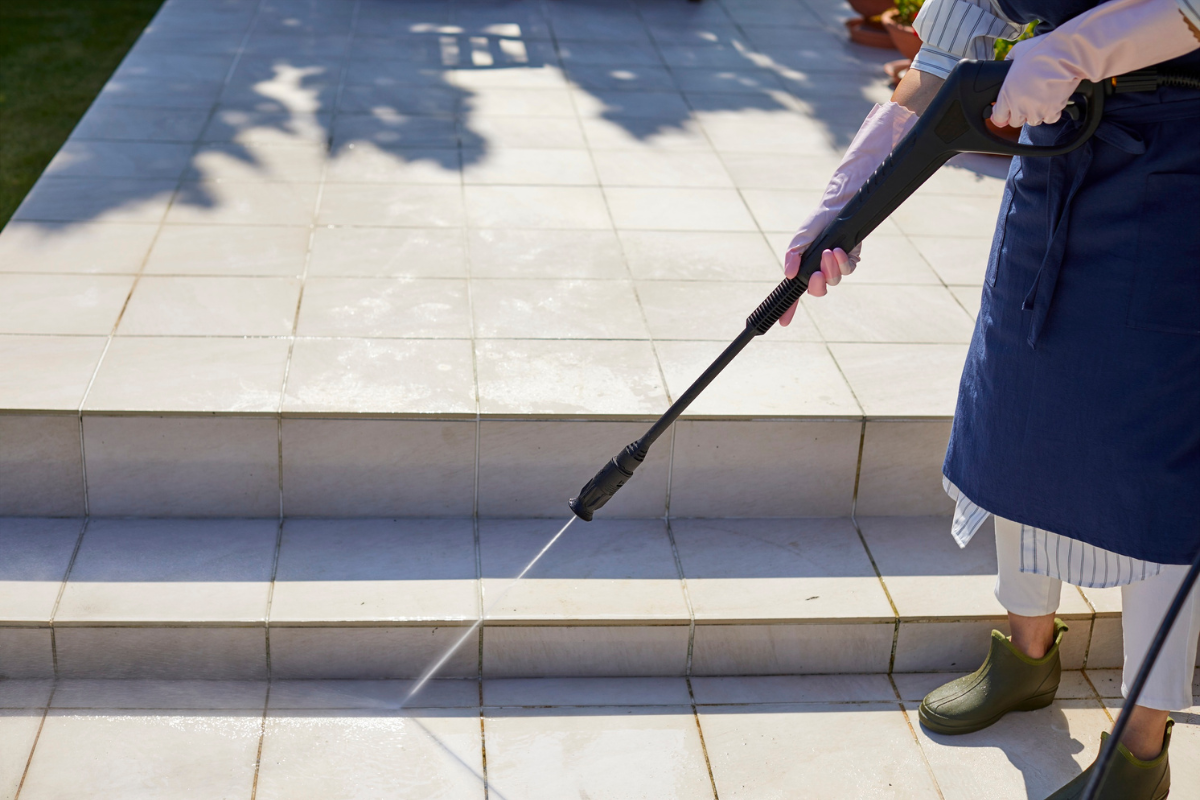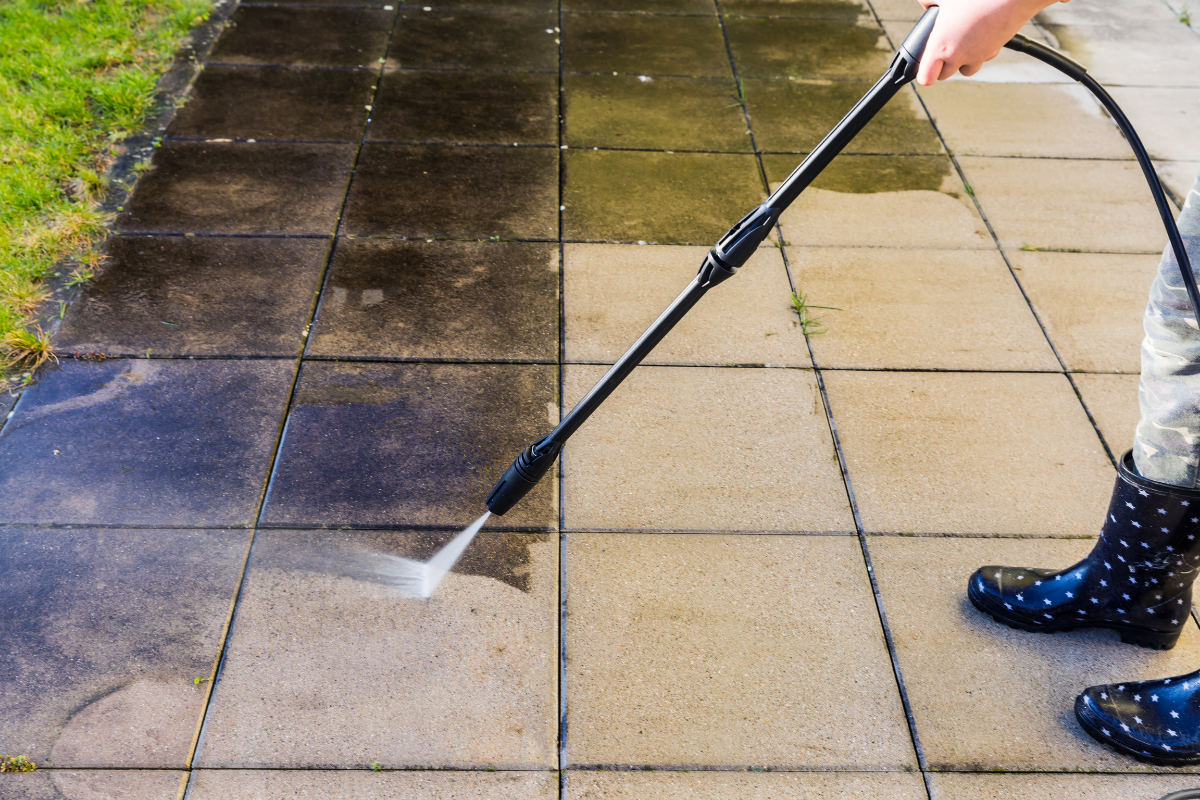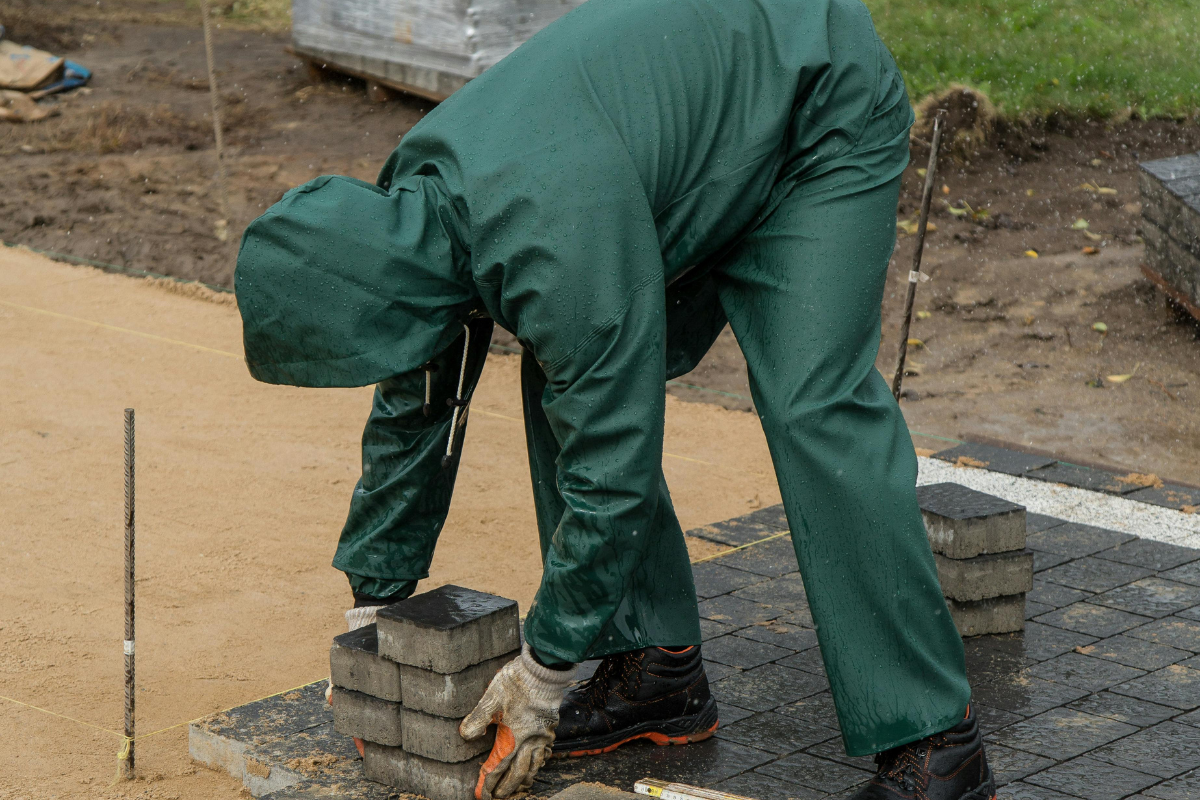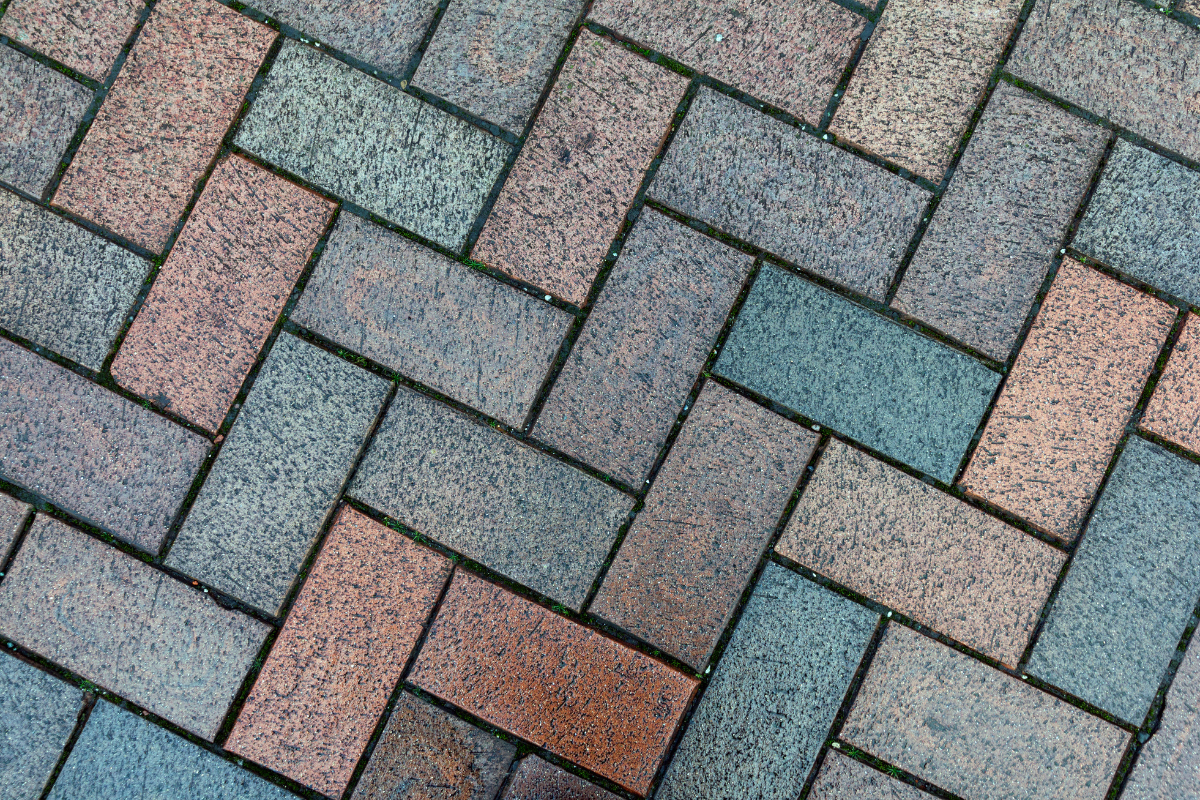
Sealing Pavers: How to Maintain a Fresh Look Year-Round



A well-laid paver surface should feel like a permanent invitation. It frames the home, moves water away from foundations, guides guests to the door, and hosts memories on the patio. What homeowners discover, usually by the second rainy season, is that pavers are durable but not invincible. Sun, sand, tire marks, irrigation overspray, pressure washing, and the occasional barbecue mishap take a toll. Sealing pavers is not vanity, it is a practical move that stabilizes the surface, slows wear, and keeps color strong. Done right, it reduces maintenance, prevents costly repairs, and keeps the driveway or patio looking crisp from January to December.
I have cleaned and sealed pavers in coastal humidity and inland heat, on new installations and on surfaces that had seen better decades. The pattern repeats: the clients who keep their pavers clean and sealed on a steady cycle spend less over time and report fewer headaches. The ones who wait until the sand washes out, the joints sprout weeds, and the surface turns blotchy often have to address more than just aesthetics.
What a sealer actually does
Think of paver sealer as a protective coat that balances permeability with defense. Pavers need to breathe. They expand and contract with temperature swings, and they release moisture picked up from rain or irrigation. A good paver sealer lets vapor move out, while guarding against UV degradation, stains, and joint erosion. On brick, concrete, or natural stone, the sealer can be penetrating, film-forming, or a hybrid.
Penetrating sealers soak into the pores. They are usually water-based, low sheen, and excel at resisting water and oil intrusion without changing the surface texture much. Film-forming sealers lay a thin coat on top. Acrylics are common here, offering color enhancement and a sheen that ranges from satin to high gloss. Hybrids combine traits so you get some color pop and surface protection without a heavy film. In my work, hybrid water-based acrylics hit the sweet spot for driveways that see frequent pressure washing, car traffic, and sun exposure. Solvent-based options can deepen color even more, but they need careful handling, solid ventilation, and the right temperature window.
Sealers also stabilize joint sand. A well-formulated product binds polymeric or washed sand in place, turning loose grains into a semi-rigid mass that resists washouts and weeds. This matters more than most homeowners realize. Joint integrity is what keeps pavers from shifting and settling unevenly. When the sand holds and water drains as designed, the whole system performs longer.
The case for sealing new and existing pavers
New pavers arrive with factory color and a fresh texture. They also carry micro-dust from cutting and shipping, and they might have efflorescence lurking under the surface. On a brand-new install, I like to wait a few weeks before sealing, especially in humid climates, to let any moisture migrate out and early efflorescence bloom so we can clean it properly. Once clean and dry, a good paver sealer locks in color, protects the face from UV fade, and prevents the first oil stain from becoming weed removal between pavers a permanent reminder under the sedan.
Older pavers have different needs. I often see driveways with a mottled look, patches of algae near a shaded curb, and tire arcs where the car settles in the same spot every day. We can almost always restore these surfaces with thorough cleaning, targeted stain treatment, sand replacement, and a properly chosen sealer. The payoff is immediate. Neighbors ask if the homeowner got new pavers installed. More importantly, the surface becomes easier to maintain. Dirt and organic matter sit on the sealed surface rather than lodging in the pores.
If you are searching for paver cleaning Lutz or typing paver sealing near me after a few seasons of neglect, that is common. The right pressure washing service can reset the surface. Look for a team that understands washing and sealing as a system, not two disconnected tasks.
Cleaning well before sealing
Sealer will highlight whatever is on the surface. That includes tire marks, rust, leaf tannins, and efflorescence. Cleaning is not a quick once-over with a consumer-grade unit. Proper prep is the longest portion of a successful project.
Start with a rinse to remove loose debris. For driveways and large patios, I use a surface cleaner attachment on a professional pressure washer set in the 2,500 to 3,500 PSI range, adjusting for the material. Concrete pavers tolerate higher pressure than soft natural stone. If you do this yourself, be careful. Wand-only cleaning can create stripes, and too much pressure at the wrong angle can scar the face. For those looking up driveway pressure washing near me, ask contractors what tips and equipment they use, and how they control pressure on edges and borders.
Rust and irrigation stains call for specific chemistry. Oxalic and citric-based cleaners can lift rust without burning the surface, but dwell time and dilution matter. Oil needs a degreaser and patience. Grease often wicks back up, so I plan two rounds, first to break the bond, second to pull residue. Efflorescence, the white, powdery salt that appears on pavers, responds to specialty cleaners designed to dissolve mineral deposits. Never pool deck paver sealing seal over active efflorescence, it will cloud the sealer and lead to early failure.
After cleaning, allow complete drying. In warm, breezy weather, most surfaces are ready in 24 hours. In humid, shaded areas, it can take 36 to 48 hours. I keep a moisture meter on the truck, and I check suspect areas around downspouts and low spots. Trapped moisture under a film-forming sealer can whitening-blush or bubble as vapor tries to escape.
Choosing the right sealer for your pavers
The market is crowded with products labeled “wet look,” “enhancing,” “matte,” and “high gloss.” Labels do not tell the whole story. Match sealer chemistry to paver type, use case, and local conditions.
Concrete pavers often benefit from a water-based acrylic that adds mild color enhancement and joint stabilization without forming a thick layer. On a sun-exposed driveway, I prefer a UV-resistant formula with an abrasion rating suitable for vehicular traffic. Brick pavers, especially older ones with open pores, can take a penetrating sealer beneath a light film-forming top coat. Natural stone is its own category. Some stones darken dramatically with an enhancer, while others develop blotchy patches if the sealer isn’t designed for dense surfaces. When in doubt, test a small area in a corner and review it under morning and afternoon light.
Gloss level is subjective. High gloss can look striking on a patio with a modern aesthetic, but it shows dust and tire marks faster and can become slick when wet if the product lacks anti-slip additives. Satin or low sheen feels more forgiving on driveways. Keep in mind that heavy film build makes maintenance harder down the line, because resealing over a thick coat often leads to layering issues, peeling, or cloudy spots. A light, breathable system that you can refresh every 2 to 3 years tends to age better than a thick, glassy finish that looks great for a year and then becomes a chore.
As for brands, I avoid names and promises that sound like permanent solutions. There is no permanent sealer for a surface that lives outdoors. Sun and water always win eventually. Choose a reputable paver sealer with a clear technical data sheet, VOC compliance for your region, and realistic guidance on recoat cycles.
Weather and timing: the quiet determinants of success
The best sealer applied in the wrong conditions will fail. Temperature, surface temperature, humidity, wind, and dew point all matter. A common window for water-based acrylics is ambient temperatures between 50 and 90 degrees Fahrenheit and no rain for 24 hours. On a hot day, the surface can exceed the air temperature by 10 to 20 degrees, especially on darker pavers. If the pavers are too hot to keep your hand on for several seconds, the sealer may flash off before it bonds, leading to uneven sheen and poor adhesion.
Dew is an overlooked culprit. I have seen sealer blush that appeared overnight due to heavy dew forming over a still-curing film. If your area gets nightly dew, plan a morning application so the film has more daylight to tack up before evening moisture settles. Light wind helps solvent evaporation and curing, but gusts can carry dust and pollen onto the wet surface. Check the forecast like a roofer checks radar.
Application details that separate good from great
I favor a two-coat system in most cases. The first coat penetrates and bonds. The second creates uniform coverage and sheen. The schedule depends on the product, but many water-based acrylics allow a second coat after 2 to 4 hours, provided the first coat has turned from milky to clear and is tack-free.
Spray, roll, or both. For patios with intricate patterns, a low-pressure sprayer reaches into the joints and provides even coverage. Back-rolling with a 3/8-inch nap evens out any lap marks. On driveways, I often spray the field and cut edges by hand to prevent overspray on garage doors or landscape edging. Avoid over-application. Puddle marks turn into shiny spots with poor traction and can peel. Work in manageable sections, especially on a warm day when open time shrinks.
Joint sand comes before sealer, not after. Once the surface is clean and dry, sweep polymeric or washed sand into the joints, compact lightly with a plate compactor if you have access, and blow off all residue. Any sand dust left on the surface will lock under the sealer and create a hazy look. If using polymeric sand, mist according to the manufacturer’s instructions and allow it to set. Then seal. If you want the sealer itself to help stabilize washed sand, choose a product with that capability and budget an extra pass to ensure it soaks the joints.
Foot traffic is usually fine after a few hours. Vehicle traffic should wait 24 to 48 hours, longer if temperatures are cool. I set cones or barricades on driveways to avoid misunderstandings with early commuters. One tire turn over a soft film can leave a pattern that lasts for years.
How pressure washing fits into the maintenance cycle
Sealed soft washing pavers clean faster and easier, but they still need routine care. A gentle rinse every week or two removes airborne dust and pollen that feed algae. When it is time for deeper cleaning, keep pressure sensible and use the right tools. A surface cleaner prevents zebra stripes. A fan tip held at a shallow angle reduces the risk of etching. Harsh degreasers and high-alkaline cleaners can dull the sealer prematurely, so spot treat stains and rinse promptly.
If your search history includes pressure washing or pressure washing service because the driveway looks chalky, consider that the surface might be the sealer, not the paver. Acrylic films oxidize slowly in the sun. Too-aggressive washing can strip the film, leading to uneven sheen. When that oxidation becomes visible, you are due for a maintenance coat, not a higher PSI. Professionals who specialize in paver sealing understand this line. They clean to preserve the coating, then refresh it before the surface degrades.
Real-world timelines and costs
In a warm, humid region, I recommend sealing new concrete pavers within the first 1 to 3 months after installation, once efflorescence shows and can be cleaned. After that, expect a reseal every 2 to 3 years on driveways and every 3 to 4 years on patios and walkways, depending on sun exposure and traffic. Shaded, damp zones may need attention sooner because algae growth and moisture stress the coating.
Pricing varies by market, prep complexity, and product. As a rough ballpark for planning, full-service washing and sealing might range from 1.50 to 3.50 dollars per square foot, with the lower end for straightforward patios and the higher end for driveways with heavy stains, joint reconstruction, or high-gloss finishes that require meticulous application. If you are comparing estimates after searching paver sealing near me, ask what is included. Some quotes cover two coats, sand refilling, and stain treatments. Others price those as add-ons. Cheap per-square-foot prices sometimes hide single-coat applications or minimal prep.
Common pitfalls and how to avoid them
Two mistakes show up repeatedly: sealing over moisture and over-applying product. Moisture under a film causes whitening, bubbles, and early failure. Over-application traps solvents and leads to tacky patches that never fully cure. Both problems are preventable with patience, the right weather window, and a disciplined application rate.
Efflorescence is a third troublemaker. If you do not remove it before sealing, it will keep forming under the film and turn the finish cloudy. Some homeowners try to pressure wash it away, which only exposes more fresh salt as water drives through the paver body. Use an efflorescence cleaner, rinse until runoff is neutral, allow a full dry, then seal.
Slipperiness deserves attention. Any film-forming sealer can become slick when wet, particularly at higher gloss levels. If slip resistance is a concern, ask for a sealer that accepts anti-slip media. The additive is nearly invisible at typical loads and makes a real difference on sloped driveways and pool decks.
Finally, mismatched products create headaches. Solvent-based sealer over a water-based coating, or vice versa, can cause lifting and haze. If you are not sure what is on your pavers now, test a small spot. I keep a compatibility kit on hand for this reason. Sometimes the best path is to chemically strip a failing film and start fresh, even though it adds a day to the job.
Why local conditions matter
A paver surface in a breezy, arid neighborhood ages differently from one under oak canopy with daily irrigation overspray. In places like Lutz and surrounding communities, warm months bring afternoon downpours, high humidity, and aggressive plant growth along joints. Residents who call about paver cleaning Lutz often mention black algae near shaded areas and tan stains where leaves collect. In these conditions, I lean toward breathable water-based systems that resist mold without trapping moisture, combined with a cleaning schedule that stays ahead of organic buildup.
Irrigation overspray can be worse than rain. Reclaimed or high-mineral water leaves deposits that etch both pavers and sealer. Adjusting sprinkler arcs is simple and can add years to the life of a coating. If sprinklers are aging or the water source is mineral-heavy, budget for more frequent light cleanings and faster reseal cycles on the affected edges.
Saltwater pools add another layer. Salt crystals and chlorides can abrade coatings along the coping and splash zone. Sealers designed for pool decks have better chemical resistance and maintain traction when wet. I also reduce gloss in pool areas to keep surfaces comfortable under bare feet and safer when children sprint for the diving toys.
DIY versus professional service
Sealing pavers is possible as a DIY project, but it comes with caveats. The cleaning phase requires the most skill. It is where homeowners are most likely to etch the surface, gouge joints, or set stains by using the wrong chemistry. Application seems simple until the wind picks up or the afternoon sun hits and the open time drops to minutes. If things go wrong with a film-forming sealer, fixing it often means stripping, which is laborious and messy.
If you are determined to tackle it yourself, test products on a spare paver, respect coverage rates, and pick a cool, dry stretch of weather. Rent a surface cleaner. Read the technical data sheet, not just the label. And do not rush the dry time. For many homeowners, hiring a pressure washing service that specializes in washing and sealing is the easier path, especially for large driveways or intricate patios. Reliable companies talk you through their process, specify the paver sealer they use, and show references that are at least a year old so you can see how the work ages.
A maintenance plan that actually works
Pavers do not demand daily attention, but they appreciate routine. A simple plan keeps them fresh without turning you into a caretaker.
- Rinse the surface periodically, especially after tree blooms, heavy pollen, or windy days. Spot treat oil or leaf stains quickly, before they oxidize and set.
- Schedule a light clean every few months with low pressure and pH-neutral soap if needed. Inspect joints for washouts and top up sand in small areas before they spread.
- Watch the sheen. When the surface looks dull even after cleaning, or when water stops beading and begins soaking in faster, it is time to plan a maintenance coat. Do not wait until the film is completely gone.
- Keep irrigation aimed away from pavers, trim back heavy plant cover, and sweep debris off tight corners where moisture lingers.
- Every 2 to 3 years on high-traffic areas, bring in a pro or set aside a weekend for a careful reseal. Lighter-traffic patios may go 3 to 4 years.
This approach minimizes big interventions. It aligns with how sealers wear in the real world and how homeowners actually live with their outdoor spaces.
The look you choose becomes the life you live with
Sealer is half aesthetics and half engineering. Decide what you want to see. Some prefer a natural, dry look with minimal change. Others love a rich, enhanced tone that makes the paver color pop. Both can be right. Just make sure your preference does not undermine performance in your setting. On steep driveways, skip high gloss. Under deep shade, favor breathable systems that resist mildew. Around pools, prioritize traction and chemical resistance. Consider your climate and how often you can clean. A finish that looks incredible for eight months and turns difficult afterward is not a win.
When clients ask me what I use on my own home, I tell them: a breathable, water-based acrylic in a satin finish, applied in two thin coats over well-compacted joints. It gives the color a lift without looking plastic. It handles the occasional pressure washing for the barbecue area and stands up to daily parking. Most important, it stays manageable year after year. There is no heroics, just steady care.
If your pavers already look tired, start with a quality cleaning. Whether you roll up your sleeves or hire out after searching paver sealing near me, reset the surface before you lock it in. Pay attention to the weather. Choose the right paver sealer for your material and conditions. Apply light, even coats, and let them cure. From there, keep up with minor cleanings and watch for the signs that it is time to refresh. The result is a driveway, walkway, or patio that greets you the same way in spring, summer, fall, and winter. Not brand new, but well kept, honest in its wear, and always ready for what comes next.
Bulletproof Pavers
Address: 1523 Green Meadow Dr, Lutz, FL 33549
Phone: (813) 401-0693